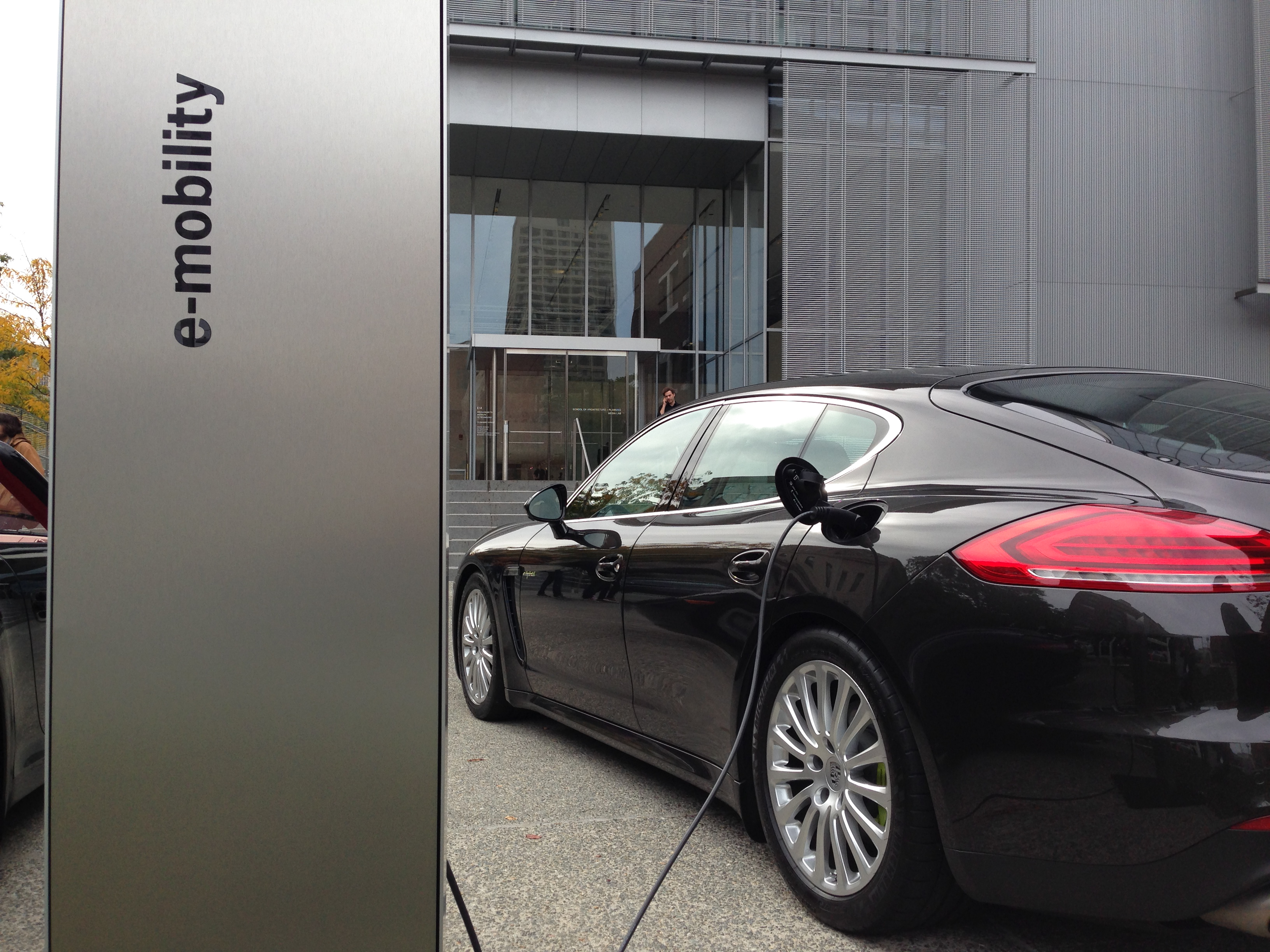Tesla’s Model S Out-Accelerates Porsche’s New Plug-in Hybrid
Next month Porsche will start selling its new Panamera S E-Hybrid, a plug-in hybrid that can travel 22 miles on battery power alone before its gas engine kicks in. Here are some first impressions after I took it for a quick test drive this week at MIT Technology Review’s EmTech conference. (Disclosure: Porsche was one of the event’s sponsors).

The new Porsche isn’t quite as responsive—or spacious—as the Tesla Model S that it’s meant to compete with. But it has some advantages, including a much greater range between fill-ups—that could make it a real challenger for Tesla. Although Tesla is a small company, it has been outselling Porsche and several other brands in California this year (see “Tesla Versus the Luxury Automakers” and “Why BMW’s i3 Electric Car is Really a Plug-in Hybrid”)
Porsche is inviting a comparison between the two cars. At a recent launch event for the vehicle, it had a Model S on hand for customers to compare. In many ways, the cars are similar. For example, they weigh about the same and both have the same amount of horsepower.
But a key difference between the vehicles is where that power comes from. Electric motors are more responsive than gas ones, and while the Tesla runs full-time on electricity, only 95 horsepower out of a total of 416 horsepower comes from the electric motor in the Porsche (the rest comes from the gasoline engine). As Eric Huffman, a Porsche Sport Driving school instructor, told me, “The cars have the same power. It’s just Tesla has all their power in an electric motor, which is instant torque.”
That instant torque, which you notice most strongly in the first second or two of acceleration, accounts for the fact that the Model S can reach 60 in 4.2 seconds, compared to 5.2 seconds for the Porsche, according to the two companies. The Porsche has the edge in terms of top speed (167 mph compared to 130 mph).
The advantage of a gasoline motor is that gasoline stores far more energy than batteries by weight or volume. As a result, while a Tesla only goes about 265 miles on a charge, the Porsche can go around 600 miles on a charge and a tank of gas.
Aside from the Porsche’s acceleration, two other things stood out during my test drive. The first is that the Porsche feels far more cluttered and cramped than the Model S. The transmission and electric motor run between the front seats. The large number of buttons and dials contrasts sharply with the relatively simple interior of the Model S, which uses a 17-inch touch screen in place of buttons.
The second is that Porsche has found a useful way to give feedback to the driver through the accelerator pedal. The gas engine is designed to switch on if you accelerate more than a certain amount. As you depress the accelerator, it gets slightly harder to push just before the gas engine kicks in, signalling that it’s about to come on. That makes it easy to stay in all-electric mode if you want to.
Overall, I had more fun driving the Tesla (see “How Tesla Is Driving Electric Car Innovation”). But many customers are going to like the fact that the Porsche can hit higher top speeds and can go farther between refueling stops.
Deciding between the two cars isn’t something many of us will need to do, though, given their high price tags. The new Porsche has a base price of $100,000. The Model S has a base price of $70,000, but there’s a $100,000 version that most directly competes with the new Porsche. The versions of the cars that I drove both cost about $115,000.
Keep Reading
Most Popular
How scientists traced a mysterious covid case back to six toilets
When wastewater surveillance turns into a hunt for a single infected individual, the ethics get tricky.
The problem with plug-in hybrids? Their drivers.
Plug-in hybrids are often sold as a transition to EVs, but new data from Europe shows we’re still underestimating the emissions they produce.
What’s next for generative video
OpenAI's Sora has raised the bar for AI moviemaking. Here are four things to bear in mind as we wrap our heads around what's coming.
Stay connected
Get the latest updates from
MIT Technology Review
Discover special offers, top stories, upcoming events, and more.